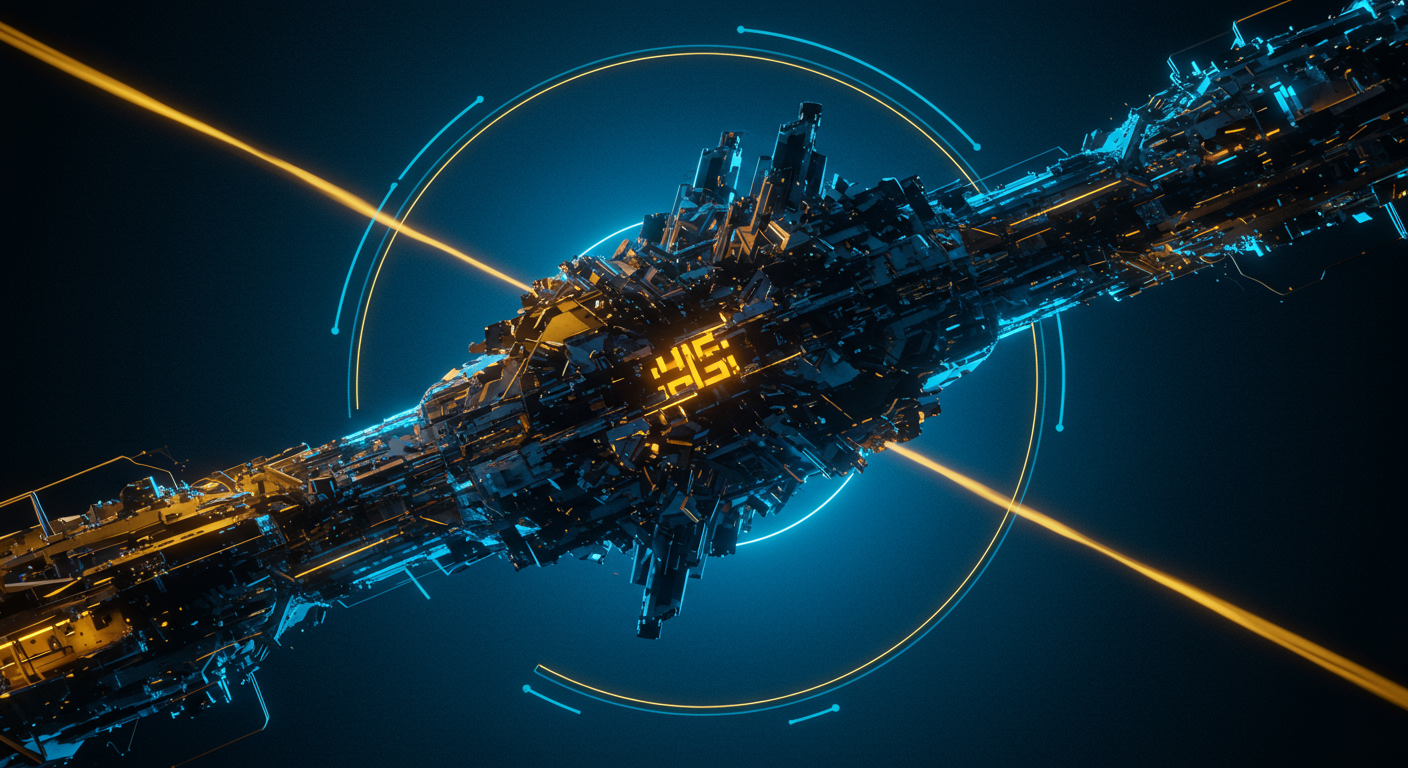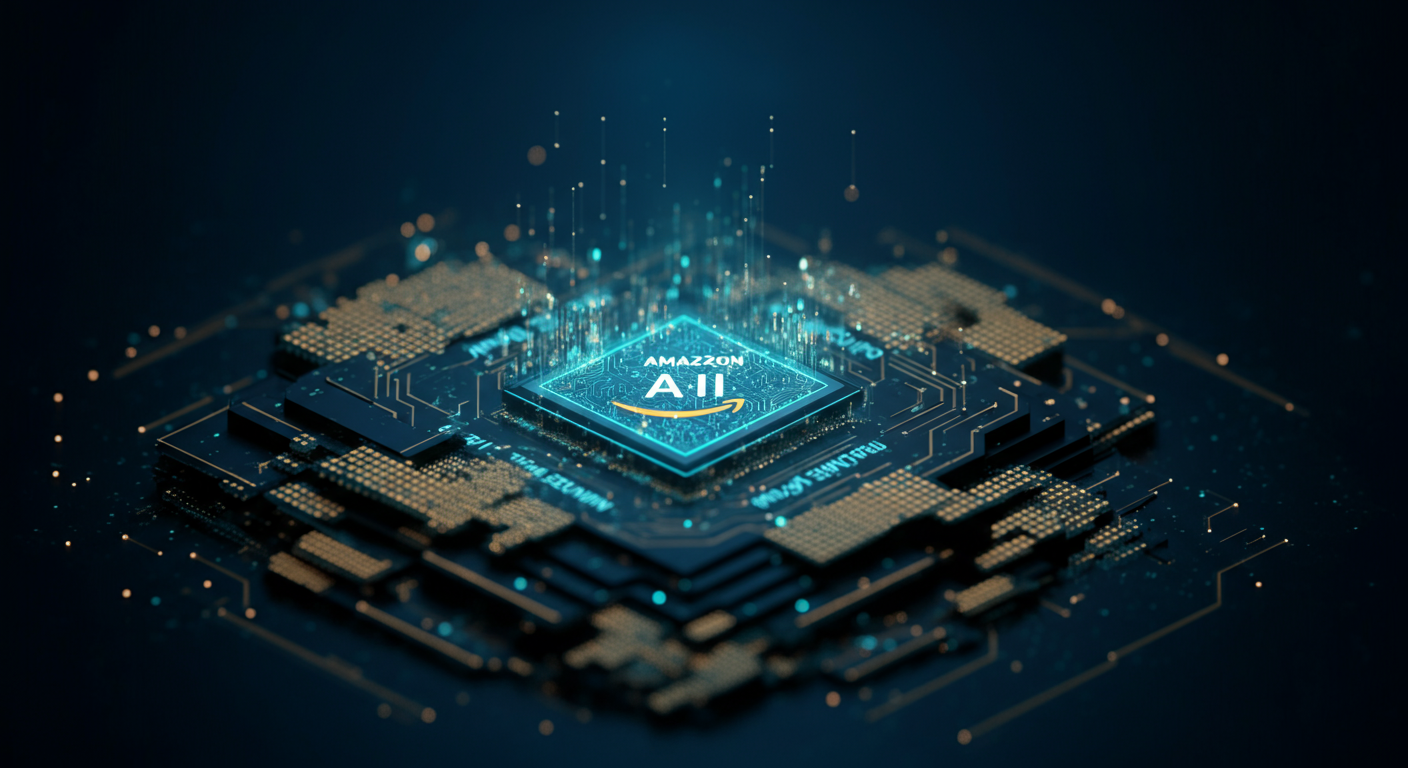Model Context Protocol (MCP): Is This the Key to Unlock Seamless AI Integration?

Unveiling Model Context Protocol (MCP): The Universal Translator for AI?
Tired of AI systems that can't seem to talk to each other? Model Context Protocol (MCP) might just be the Rosetta Stone we've been waiting for.
What in the world is Model Context Protocol?
MCP is essentially a standardized method for AI models to access and interpret contextual information. Think of it as a universal translator, enabling seamless communication between different AI components, regardless of their underlying frameworks. It bridges the gaps created by today’s fragmented AI infrastructure.Why is this even important?
Currently, AI infrastructure is, let’s say, a bit of a mess.- Incompatibility reigns supreme. Different models often can't easily share data or work together.
- Integration headaches. Connecting various AI tools and systems requires complex, custom solutions.
- Limited context-awareness. Models often operate in isolation, lacking the broader context needed for optimal performance.
MCP to the rescue
A standardized protocol, like MCP, would allow AI models across diverse platforms to exchange contextual data effortlessly. For instance, a conversational AI like ChatGPT could seamlessly integrate with an image generation AI tool to create visuals based on conversation context. ChatGPT is a large language model chatbot, designed to simulate conversation with users and answer prompts. Image generation AI tools can produce original visuals based on text prompts or style references.The Future is… Connected?
MCP represents a vital step towards a more integrated and efficient AI ecosystem. By streamlining communication and contextual awareness, it paves the way for smarter, more powerful, and ultimately more useful AI applications. Is this the key to truly unlocking the potential of AI? It certainly looks promising, and we will need the best AI Explorer to figure it out!The promise of seamless AI integration hits a wall when models can't consistently understand context.
The Gordian Knot of AI Context: Why a Standard Matters Now

Think of "context" as the entire universe of information a model needs to function optimally. It includes everything from:
- Data: The specific inputs for a given task. If you are using ChatGPT, you might input a prompt to rewrite a paragraph.
- Environment: The setting in which the AI operates (e.g., a mobile app, a web server).
- User Information: Preferences, history, and other relevant details about the person interacting with the AI.
- Integration headaches
- Deployment bottlenecks
- Reduced AI effectiveness
The Current State of Context Chaos
As AI models become increasingly complex, the need for standardized context management intensifies. However, current solutions often fall short:
- Proprietary APIs: Lock you into specific vendors.
- Ad-hoc Implementations: Result in inconsistent and brittle systems.
A Standardized Future?
The industry desperately needs a "Model Context Protocol" (MCP) – a standardized way to package and communicate context to AI models. Think of it like USB for AI. This could solve AI interoperability problems, and usher in a new era of composable AI systems.
Standardized context handling could pave the way for truly plug-and-play AI, where models from different vendors seamlessly integrate to solve complex problems. Let's explore some AI Fundamentals as we move forward to make this future a reality.
Context is king, especially in the realm of AI – enter Model Context Protocol, or MCP, poised to be the common language for AI systems.
How Model Context Protocol Works: A Deep Dive into the Mechanics
MCP isn't just another protocol; it's a meticulously crafted framework designed to standardize how AI models receive and interpret information from their surroundings. Think of it as a Rosetta Stone for AI, translating diverse data streams into a unified format.
MCP Architecture and Components
At its core, MCP boasts a modular architecture, making it highly adaptable to various AI implementations:
- Context Providers: These are the data sources – sensors, databases, user interfaces – that feed information into the AI system.
- Context Encoder: This component transforms raw data from context providers into a standardized MCP format.
- Context Transport: Facilitates secure and reliable transmission of context data between different components, using protocols like HTTP/2 or gRPC.
- Context Decoder: This piece translates the standardized MCP data into a format the AI model can understand. This AI Fundamentals knowledge is crucial.
- AI Model: The engine that utilizes the contextual information to generate insights and take actions.
Defining a Common Format
MCP defines a common format, typically using JSON or Protocol Buffers, to represent context information. This standardization ensures that any MCP-compliant AI model can seamlessly process data from any MCP-enabled data source.
Data Flow in an MCP System
Imagine a smart home. Sensors (Context Providers) gather data on temperature, light, and occupancy. The Context Encoder packages this data into MCP format. The Context Transport securely delivers it to the AI model. The Context Decoder translates it, allowing the AI to, say, automatically adjust the thermostat.
Integration with Existing Frameworks
MCP is designed to play well with others. The goal is seamless integration with popular frameworks like TensorFlow and PyTorch, as well as platforms like Kubernetes. This means developers can leverage existing tools and infrastructure to build MCP-enabled AI systems. Consider this when looking at Software Developer Tools.
Relation to Similar Protocols
While MCP might seem novel, it shares common ground with other data exchange protocols like OPC UA (for industrial automation) and HL7 (for healthcare). However, MCP is specifically tailored to the unique requirements of AI systems, focusing on real-time data, low latency, and efficient encoding.
By providing a common language for context, MCP paves the way for more robust, adaptable, and ultimately, intelligent AI applications.
Model Context Protocol (MCP): Is This the Key to Unlock Seamless AI Integration?
The Benefits Unlocked: Why MCP Could Revolutionize AI Development
Forget the fragmented AI landscape; MCP is poised to weave a cohesive web. Imagine a world where AI components from diverse origins play together harmoniously. That's the promise of Model Context Protocol (MCP).
Improved AI Interoperability
MCP tackles the Tower of Babel scenario plaguing AI. By standardizing how AI models share contextual information, MCP allows seamless integration, irrespective of their origin.
Think of it like a universal translator for AI, enabling models built on different frameworks to communicate effectively.
Simplified AI Deployment
Deploying AI is often a headache. MCP streamlines the process by standardizing context handling. This makes integrating and managing AI models easier, saving time and resources.
Enhanced AI Performance
Context is king, especially for AI. MCP ensures AI models have a consistent awareness of their operating environment, leading to more accurate and reliable results.
- This is particularly crucial for applications requiring nuanced understanding, such as:
- Conversational AI
- Data Analysis
Reduced Development Costs
Reusable context management solutions inherent to MCP translate to lower development costs. No more reinventing the wheel for every new project.
Faster Innovation
Imagine a vibrant ecosystem of readily interoperable AI components. MCP fosters such an environment, encouraging faster experimentation and collaboration. Consider the impact this could have on accelerating breakthroughs in scientific research.
Improved Data Privacy
With MCP, data access and usage can be managed with greater precision. This allows for enhanced control over data privacy, aligning AI development with ethical considerations.
In short, adopting MCP isn't just an upgrade; it's a paradigm shift. It’s about creating an AI ecosystem that's more collaborative, efficient, and trustworthy. Now, let’s explore how MCP impacts various sectors and use cases.
Model Context Protocol (MCP) holds immense promise, but it isn't without its potential pitfalls.
Addressing the Skeptics: Potential Challenges and How to Overcome Them

Some valid concerns surround the widespread adoption of MCP, but with proactive strategies, these hurdles can be cleared.
- Complexity of Implementation: Integrating MCP into existing AI systems requires an initial investment in resources and expertise.
| Challenge | Mitigation Strategy |
|---|---|
| Lack of Agreement | Foster Collaboration, Encourage open dialogue with standards bodies. |
- Market Adoption: Convincing AI developers and organizations of the tangible benefits to embrace a new protocol won't be a walk in the park. Consider the Marketing challenges to encourage the adoption of ChatGPT and similar technologies.
MCP represents a significant step forward for seamless AI integration, and while challenges exist, overcoming them through collaboration, open-source solutions, and tangible demonstrations will pave the way for widespread adoption, making AI more intelligent and contextually aware. Let's explore how MCP stacks up against existing solutions on our Compare page.
Context is king (or queen!) in the AI realm, and the Model Context Protocol (MCP) might just be the royal solution we've been waiting for.
MCP vs. Custom Solutions
Rolling your own context management system might seem tempting – absolute control, right?
But let's be real, custom solutions are resource-intensive, prone to compatibility nightmares, and frankly, reinventing the wheel. MCP, on the other hand, offers a standardized approach.
MCP vs. Proprietary Frameworks
- Proprietary frameworks lock you into a specific vendor's ecosystem. Great for them, not so great for your flexibility.
- It also helps reduce vendor lock-in, which, let's be honest, gives you negotiating power.
MCP's Unique Value Proposition
MCP's beauty lies in its standardization. It promotes seamless integration between diverse AI models and infrastructure. Consider it the Rosetta Stone for AI. The Learn AI Fundamentals can help you catch up on the basics before diving deeper.
Federated Learning and Edge AI
MCP's potential extends beyond centralized systems. Its lightweight nature makes it ideal for federated learning scenarios, where models are trained across decentralized devices. And for Edge AI, MCP facilitates efficient context transfer, reducing latency and bandwidth usage.
MCP isn't a magic bullet, but it's a significant step towards a more unified and efficient AI future. It bridges the gaps between disparate systems, paving the way for true AI synergy. Ready to explore tools that make life easier? Check out the Top 100 AI Tools.
The promise of truly intelligent AI hinges on one crucial element: context.
Why Context Matters
Imagine ChatGPT, a powerful conversational AI, constantly forgetting your previous instructions. Frustrating, right? That's because it lacks proper context. Context-aware AI remembers past interactions, understands nuances, and adapts its responses accordingly. This leads to:- More relevant results: No more repetitive explanations. The AI "gets" you.
- Smarter decisions: AI can factor in previous events, user preferences, and real-world data.
- Seamless integration: Context bridges the gap between different AI systems.
Model Context Protocol (MCP): A Standard for Context
The Model Context Protocol aims to be a standardized way for AI models to manage and share context. While still evolving, MCP offers a promising path towards creating more coherent and collaborative AI experiences. MCP aims to standardize communication and management of context across different AI models.
Contributing to MCP & Future AI
The future of context-aware AI relies on open collaboration. By contributing to the MCP community, you can help shape this future and ensure AI is developed responsibly. Explore MCP, experiment with its capabilities, and share your findings. Your involvement helps ensure this crucial standard aligns with the diverse needs of the AI community. Consider contributing to MCP to unlock the future of context-aware AI.
Keywords
Model Context Protocol (MCP), AI infrastructure standard, AI interoperability, context management in AI, AI model deployment, machine learning operations (MLOps), AI standardization, context-aware AI, AI framework compatibility, AI model lifecycle, benefits of MCP, MCP adoption, challenges of MCP, alternatives to MCP
Hashtags
#ModelContextProtocol #AIInfrastructure #AIStandards #MachineLearningOps #FutureOfAI
Recommended AI tools
ChatGPT
Conversational AI
AI research, productivity, and conversation—smarter thinking, deeper insights.
Sora
Video Generation
Create stunning, realistic videos and audio from text, images, or video—remix and collaborate with Sora, OpenAI’s advanced generative video app.
Google Gemini
Conversational AI
Your everyday Google AI assistant for creativity, research, and productivity
Perplexity
Search & Discovery
Clear answers from reliable sources, powered by AI.
DeepSeek
Conversational AI
Efficient open-weight AI models for advanced reasoning and research
Freepik AI Image Generator
Image Generation
Generate on-brand AI images from text, sketches, or photos—fast, realistic, and ready for commercial use.
About the Author

Written by
Dr. William Bobos
Dr. William Bobos (known as 'Dr. Bob') is a long-time AI expert focused on practical evaluations of AI tools and frameworks. He frequently tests new releases, reads academic papers, and tracks industry news to translate breakthroughs into real-world use. At Best AI Tools, he curates clear, actionable insights for builders, researchers, and decision-makers.
More from Dr.

